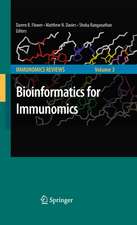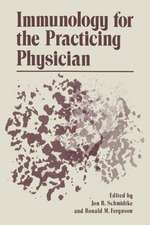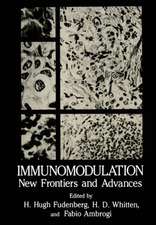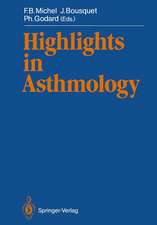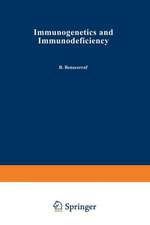Neutralization of Animal Viruses: Current Topics in Microbiology and Immunology, cartea 183
Autor Nigel J. Dimmocken Limba Engleză Paperback – 6 dec 2011
Din seria Current Topics in Microbiology and Immunology
- 18%
 Preț: 962.03 lei
Preț: 962.03 lei - 5%
 Preț: 1123.13 lei
Preț: 1123.13 lei -
 Preț: 499.76 lei
Preț: 499.76 lei - 5%
 Preț: 967.79 lei
Preț: 967.79 lei - 18%
 Preț: 1118.62 lei
Preț: 1118.62 lei - 5%
 Preț: 717.00 lei
Preț: 717.00 lei - 5%
 Preț: 712.97 lei
Preț: 712.97 lei - 5%
 Preț: 709.51 lei
Preț: 709.51 lei - 5%
 Preț: 709.51 lei
Preț: 709.51 lei - 5%
 Preț: 721.19 lei
Preț: 721.19 lei - 5%
 Preț: 359.78 lei
Preț: 359.78 lei - 5%
 Preț: 711.88 lei
Preț: 711.88 lei - 5%
 Preț: 774.81 lei
Preț: 774.81 lei - 15%
 Preț: 640.06 lei
Preț: 640.06 lei - 5%
 Preț: 717.00 lei
Preț: 717.00 lei - 5%
 Preț: 360.34 lei
Preț: 360.34 lei - 5%
 Preț: 707.69 lei
Preț: 707.69 lei - 5%
 Preț: 717.56 lei
Preț: 717.56 lei - 5%
 Preț: 716.28 lei
Preț: 716.28 lei - 5%
 Preț: 717.20 lei
Preț: 717.20 lei - 5%
 Preț: 711.32 lei
Preț: 711.32 lei - 5%
 Preț: 711.88 lei
Preț: 711.88 lei - 5%
 Preț: 718.29 lei
Preț: 718.29 lei - 5%
 Preț: 709.51 lei
Preț: 709.51 lei - 5%
 Preț: 369.84 lei
Preț: 369.84 lei - 5%
 Preț: 712.25 lei
Preț: 712.25 lei - 5%
 Preț: 716.45 lei
Preț: 716.45 lei - 5%
 Preț: 706.60 lei
Preț: 706.60 lei - 5%
 Preț: 711.52 lei
Preț: 711.52 lei - 5%
 Preț: 713.54 lei
Preț: 713.54 lei - 5%
 Preț: 720.47 lei
Preț: 720.47 lei - 5%
 Preț: 725.42 lei
Preț: 725.42 lei - 5%
 Preț: 708.06 lei
Preț: 708.06 lei - 5%
 Preț: 713.70 lei
Preț: 713.70 lei - 5%
 Preț: 705.83 lei
Preț: 705.83 lei - 5%
 Preț: 710.96 lei
Preț: 710.96 lei - 5%
 Preț: 723.93 lei
Preț: 723.93 lei - 5%
 Preț: 707.69 lei
Preț: 707.69 lei - 5%
 Preț: 715.35 lei
Preț: 715.35 lei - 5%
 Preț: 709.87 lei
Preț: 709.87 lei - 5%
 Preț: 359.05 lei
Preț: 359.05 lei - 5%
 Preț: 374.20 lei
Preț: 374.20 lei - 15%
 Preț: 635.31 lei
Preț: 635.31 lei - 5%
 Preț: 707.86 lei
Preț: 707.86 lei - 5%
 Preț: 721.96 lei
Preț: 721.96 lei - 15%
 Preț: 632.88 lei
Preț: 632.88 lei - 15%
 Preț: 632.05 lei
Preț: 632.05 lei - 15%
 Preț: 642.83 lei
Preț: 642.83 lei - 5%
 Preț: 709.14 lei
Preț: 709.14 lei
Preț: 708.58 lei
Preț vechi: 745.88 lei
-5% Nou
Puncte Express: 1063
Preț estimativ în valută:
135.60€ • 140.71$ • 113.34£
135.60€ • 140.71$ • 113.34£
Carte tipărită la comandă
Livrare economică 17-31 martie
Preluare comenzi: 021 569.72.76
Specificații
ISBN-13: 9783642778513
ISBN-10: 3642778518
Pagini: 164
Ilustrații: VII, 149 p.
Dimensiuni: 155 x 235 x 9 mm
Greutate: 0.24 kg
Ediția:Softcover reprint of the original 1st ed. 1993
Editura: Springer Berlin, Heidelberg
Colecția Springer
Seria Current Topics in Microbiology and Immunology
Locul publicării:Berlin, Heidelberg, Germany
ISBN-10: 3642778518
Pagini: 164
Ilustrații: VII, 149 p.
Dimensiuni: 155 x 235 x 9 mm
Greutate: 0.24 kg
Ediția:Softcover reprint of the original 1st ed. 1993
Editura: Springer Berlin, Heidelberg
Colecția Springer
Seria Current Topics in Microbiology and Immunology
Locul publicării:Berlin, Heidelberg, Germany
Public țintă
ResearchCuprins
1 Introduction.- 2 Immunoglobulin G Neutralization by Inhibition of Attachment of Virus to the Cell.- 3 Immunoglobulin G Neutralization Which Does Not Inhibit Attachment of Virus to the Cell.- 4 Immunoglobulin G Neutralization by Aggregation of Virions . ..- 5 Immunoglobulin G Neutralization Mechanisms which Operate After Attachment of the Virus-Antibody Complex to a Cell Receptor Unit.- 5.1 Inhibition of Fusion at the Plasma Membrane.- 5.2 Inhibition of Endocytosis.- 5.3 Inhibition of Fusion of Viral and Cellular Membranes.- 5.4 Inhibition of Non-fusion Uncoating.- 5.5 Inhibition of Events which Occur After Primary Uncoating.- 6 Neutralization which Occurs by Virus Binding Antibody After It Has Attached to a Cell.- 7 Role of the Cell in Neutralization.- 8 Antibody-Dependent Enhancement of Infectivity by Neutralizing Antibody: Fc and Complement Receptors.- 9 Neutralization by Polymeric Immunoglobulin A.- 10 Neutralization by Immunoglobulin M.- 11 The Relevance of Immunoglobulin Isotype to Neutralization.- 12 Viral Carbohydrates, Proteins and Neutralization.- 12.1 Carbohydrates and Neutralization.- 12.2 Proteinsand Neutralization.- 13 Properties of Protein and Peptide Antigens Which Elicit Neutralizing Antibody.- 14 Neutralization In Vivo.- 15 Complement and Neutralization.- 16 Neutralization by Inhibition of Release of Progeny Virus from the Infected Cell.- 17 Changes in Virus Proteins and Virion Structure on Binding Antibody, Including Synergistic Neutralization.- 18 Reversibility of Neutralization.- 19 Neutralization by Fragments of Antibody.- 20 Quantitative Aspects of Neutralization.- 21 Unconventional Neutralization.- 21.1 Genetic Engineering of Antibodies and Viruses.- 21.2 Anti-idiotype Antibodies and Neutralization.- 22 The Evolutionary Significance of Neutralization Sites.- 22.1 Why Do Viruses Have Neutralization Sites?.- 22.2 Strategies which Avoid or Minimize Expression of, or Response, to Neutralization Sites.- 23 Neutralization of Poliovirus and Rhinovirus: A Summary.- 23.1 Introduction.- 23.2 Attachment.- 23.3 Internalization.- 23.4 Post-internalization.- 23.5 Aggregation.- 23.6 Conformational Changes on Binding Antibody.- 24 Neutralization of Type a Influenza Virus by Immunoglobulins M, A and G: A Summary.- 24.1 Introduction.- 24.2 IgM Neutralization.- 24.3 IgA Neutralization.- 24.4 IgG Neutralization.- 24.5 Discussion.- 25 Neutralization of HIV-1: A Summary.- 26 Conclusions.- References.


